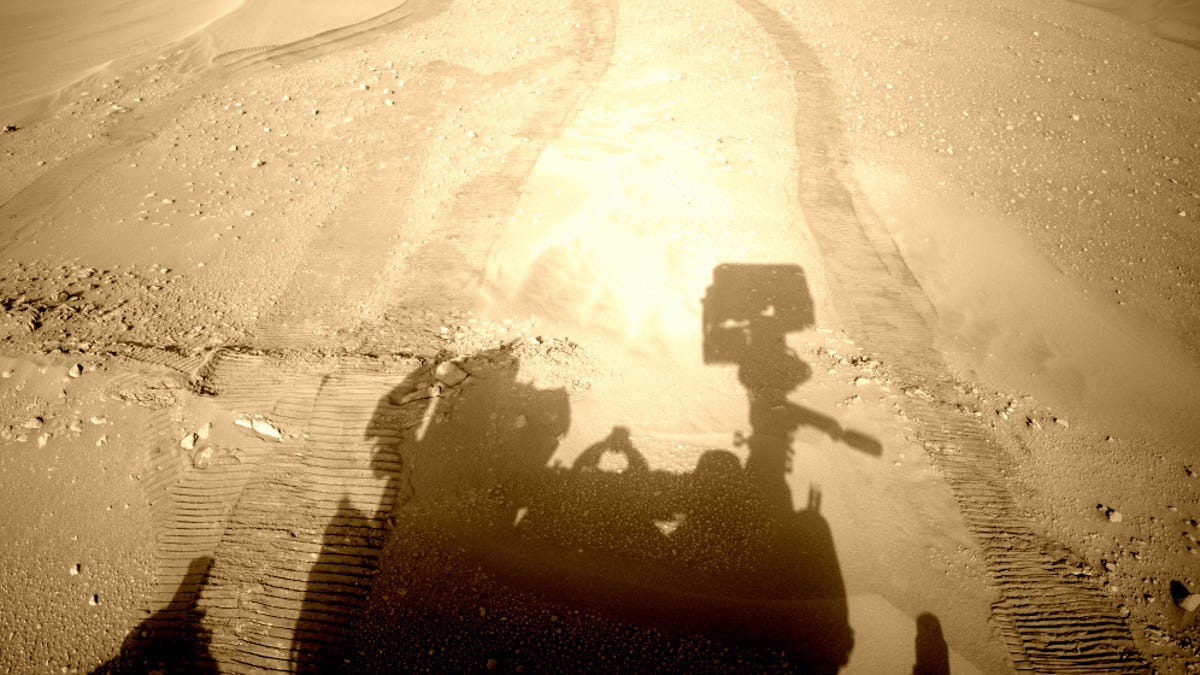NASA's Perseverance Rover Records the Sound of a Dust Devil on Mars For the First Time
The robot took a direct hit from a dusty whirlwind the size of a large apartment building.

Perseverance observes its own shadow in Jezero crater on Mars.
NASA's Perseverance rover on Mars was visited by a Martian dust devil and managed to record the whirlwind with its microphone in a new first for planetary exploration.
The swirling vortex sounds pretty much the same as a dust devil here on Earth, if maybe a little less dramatic by comparison. But the data from the rover's full suite of sensors, including its navigation camera, paired with computer modelling leads researchers to believe the dust devil stretched 25 meters (82 feet) wide and 118 meters (387 feet) tall -- taller than a 30-story building.
The findings are published this week in the journal Nature Communications by a team led by Naomi Murdoch, a planetary scientist at the University of Toulouse in France.
"This chance dust devil encounter demonstrates the potential of acoustic data for resolving the rapid wind structure of the Martian atmosphere," the paper reads.
Perseverance took a direct hit from the dusty whirlwind in Jezero crater on Sept. 27, 2021. Jezero appears to experience dust devils more frequently than other locations on Mars; the Insight lander didn't witness a single one in the dusty plain it calls home over a full Martian year.
In addition to helping scientists better understand wind and weather patterns on the Red Planet, which is known for massive and occasionally global dust storms, the researchers were also able to identify individual grains of dust or sand in the whirlwind impacting the microphone.
"Grain impacts are implicated in the degradation of hardware on the surface of Mars," they write. "Measuring the probability or rate of grain impacts may help with future instrumentation designs or in planning operations."
Next, scientists hope that Perseverance will encounter another dust devil at a different location so that they can contrast how differing geography affects the structure of the mini Martian twisters.

